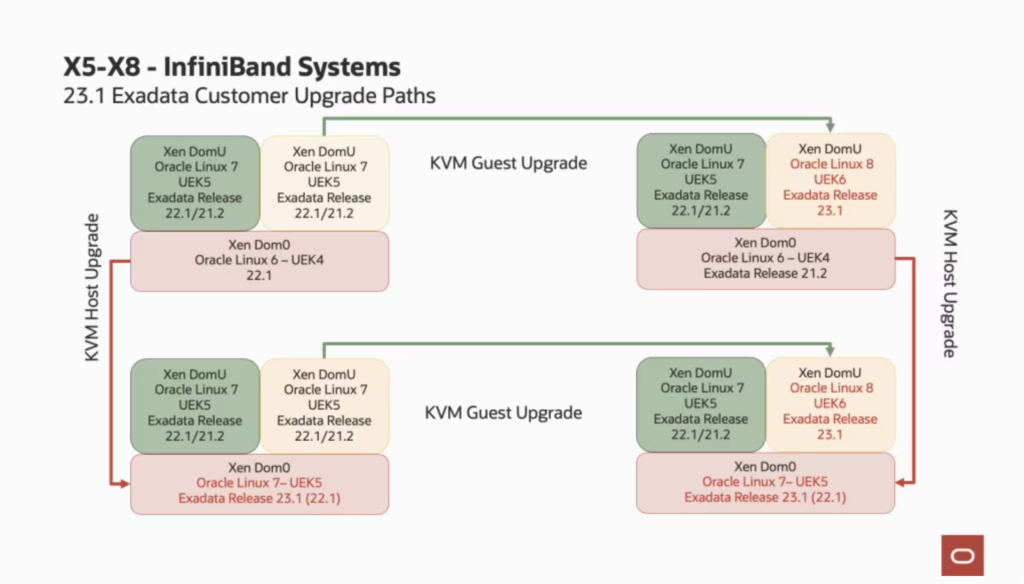On 08/March/2023 the Oracle Exadata team released version 23.1.0.0.0 and this include a significant change, OEL 8. I already explained that in my first post that you can read here. In my previous posts, I already described how to patch how to patch storage and switch, and the dom0. In this post, I will discuss how to patch the domU.
What you can do
I already wrote this previously but is important to understand the upgrade paths that you can do: If you are running the old Exadata with InfiniBand, your dom0 will always be updated until Oracle Linux 7 with UEK5. For domU you can upgrade to the OEL 8. And you can upgrade in any order, first dom0 or domU. If you are running RoCE, your dom0 can run the latest OEL 8 UEK6. The blog post from Oracle made an excellent explanation about the upgrade paths and below you can see the images that are there (I used the image from their post).
